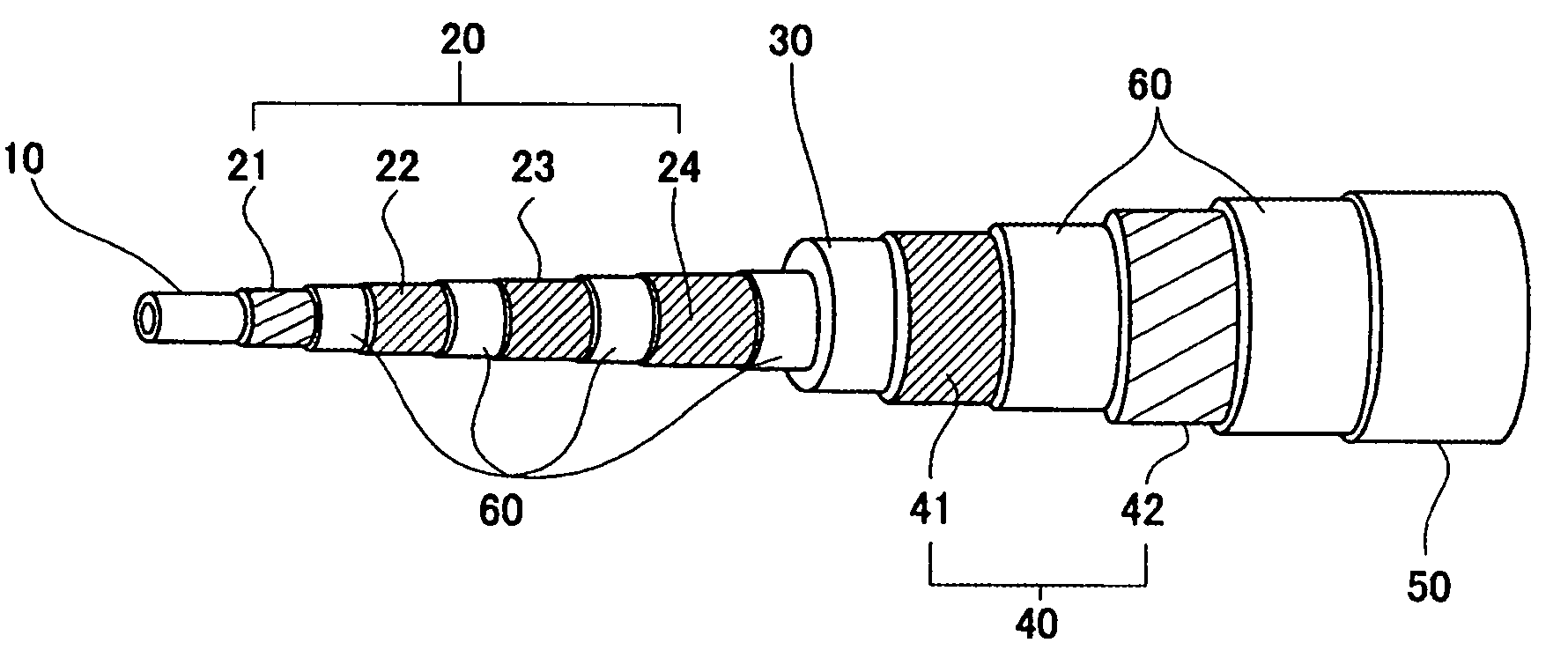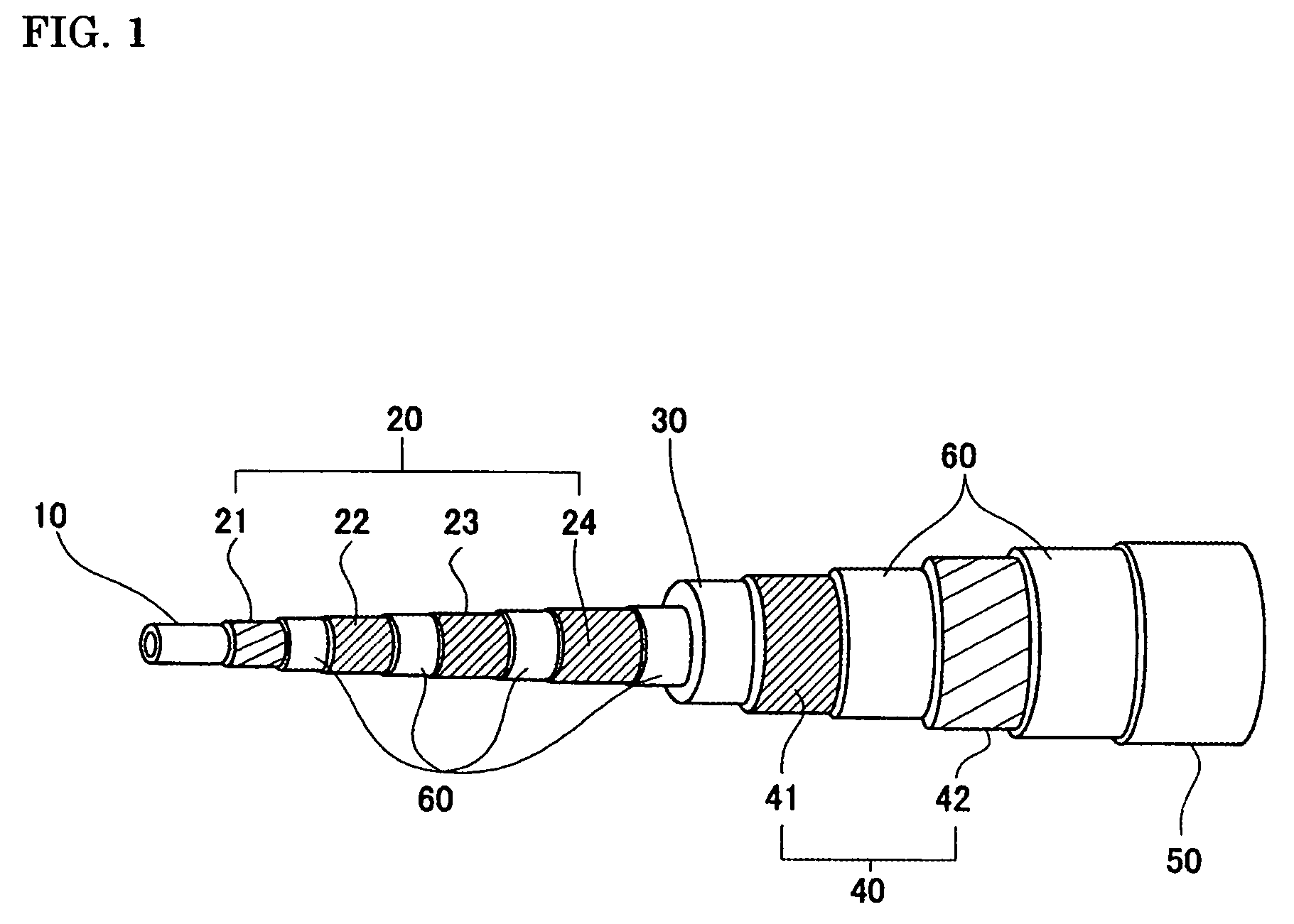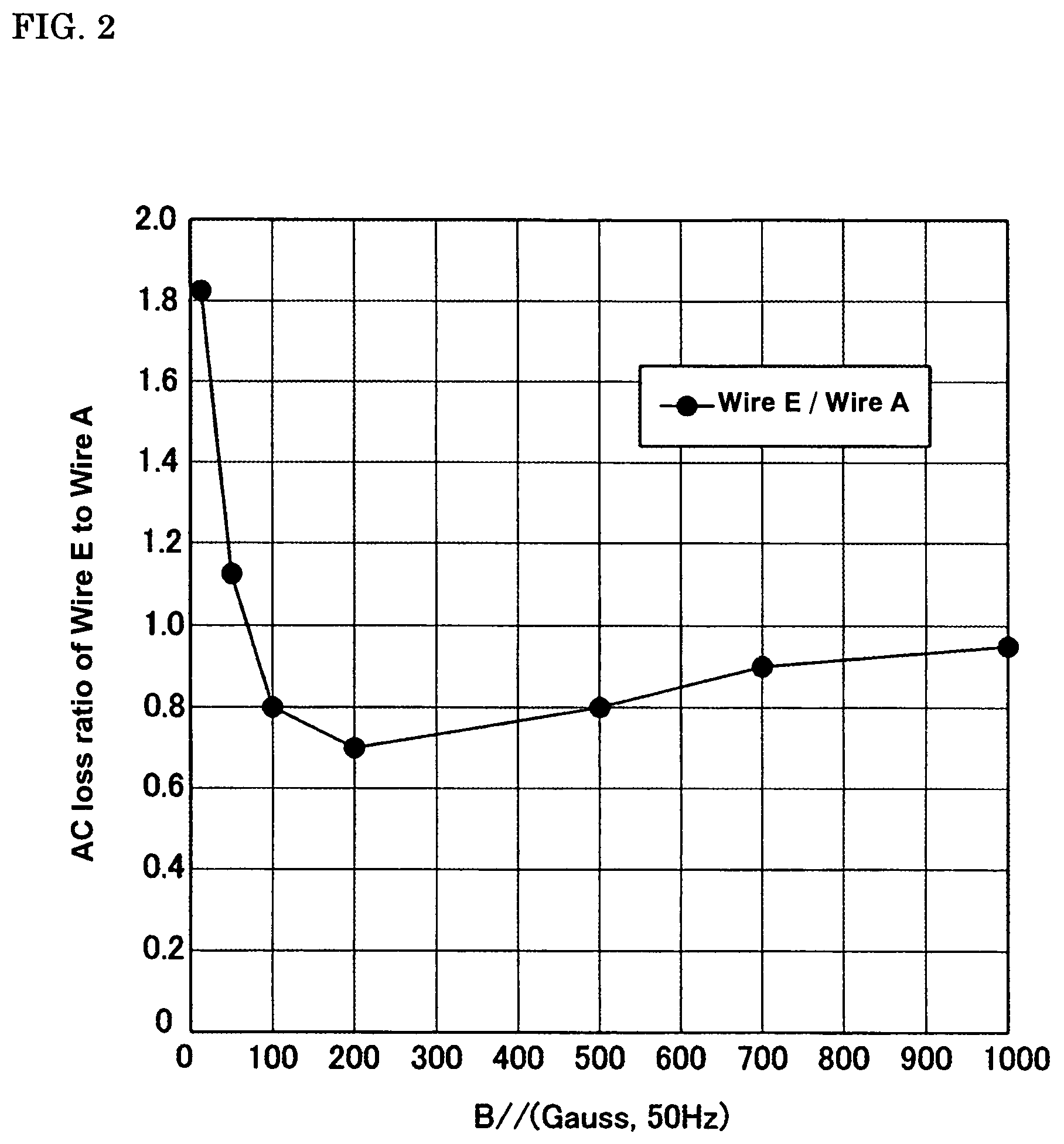Superconducting cable
a superconducting cable and cable technology, applied in the direction of superconducting magnets/coils, cables, insulated conductors, etc., can solve the problems of cable current-carrying properties degradation, high ac loss, and decrease of yield
- Summary
- Abstract
- Description
- Claims
- Application Information
AI Technical Summary
Benefits of technology
Problems solved by technology
Method used
Image
Examples
example 1
[0058]A cable conductor having the structure shown in FIG. 1 was fabricated using the above-described sample wires. The specifications of the fabricated cable (Example 1) are shown in Table II. The cable has a stranded-wire former formed of stranded insulated Cu wires, a four-layer conductor layer over the former, and an insulation layer (with a thickness of 7 mm), and a two-layer magnetic shielding layer. The winding pitches and winding directions of the superconducting wires forming the conductor layer and the magnetic shielding layer were adjusted so as to exhibit a uniform current-carrying property.
[0059]A layer in which the maximum applied magnetic field was less than 100 Gauss was formed using the untwisted filament type superconducting wire A, and a layer in which the maximum applied magnetic field was 100 Gauss or higher was formed using the twisted filament type superconducting wire E. Specifically, the second, third, and fourth layers of the conductor layer and the first l...
PUM
| Property | Measurement | Unit |
|---|---|---|
| Length | aaaaa | aaaaa |
| Length | aaaaa | aaaaa |
| Temperature | aaaaa | aaaaa |
Abstract
Description
Claims
Application Information
 Login to View More
Login to View More - R&D
- Intellectual Property
- Life Sciences
- Materials
- Tech Scout
- Unparalleled Data Quality
- Higher Quality Content
- 60% Fewer Hallucinations
Browse by: Latest US Patents, China's latest patents, Technical Efficacy Thesaurus, Application Domain, Technology Topic, Popular Technical Reports.
© 2025 PatSnap. All rights reserved.Legal|Privacy policy|Modern Slavery Act Transparency Statement|Sitemap|About US| Contact US: help@patsnap.com



